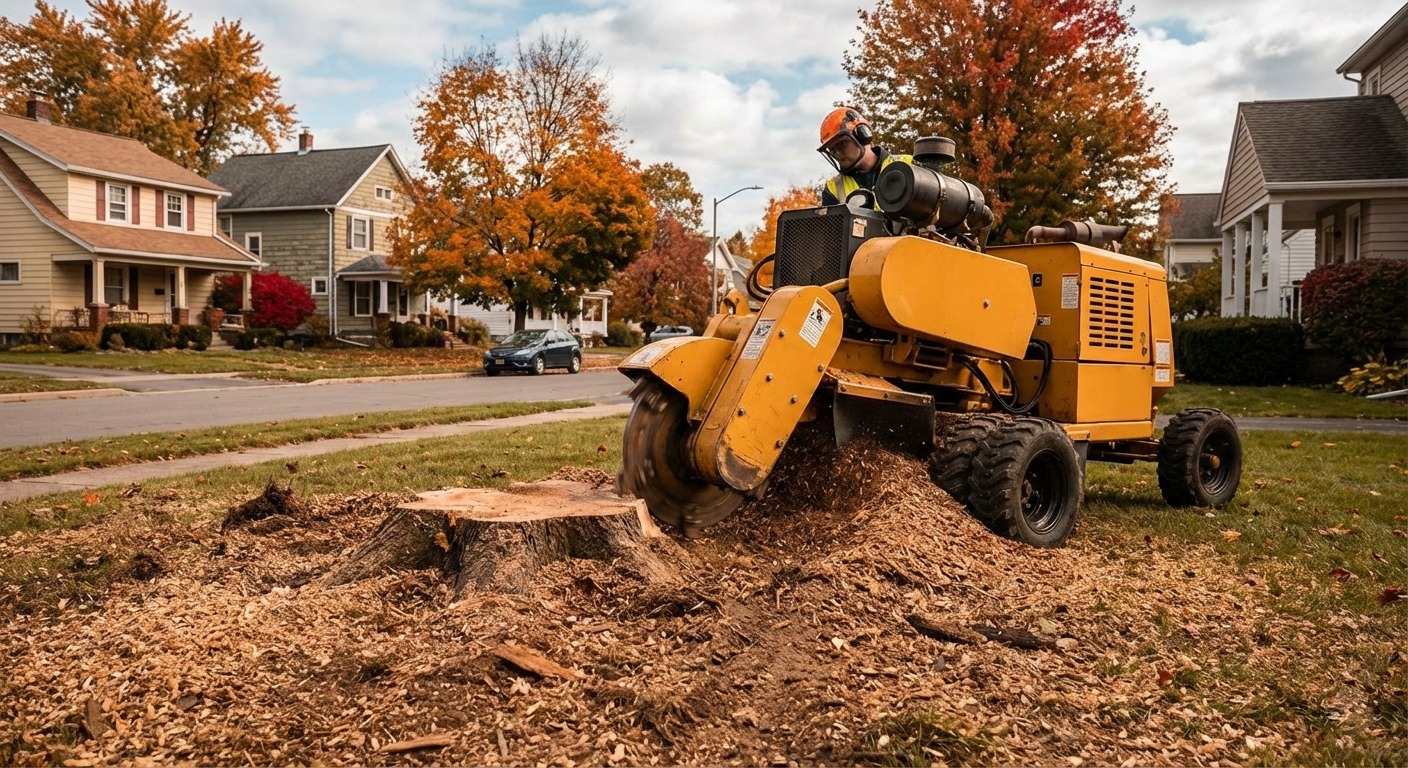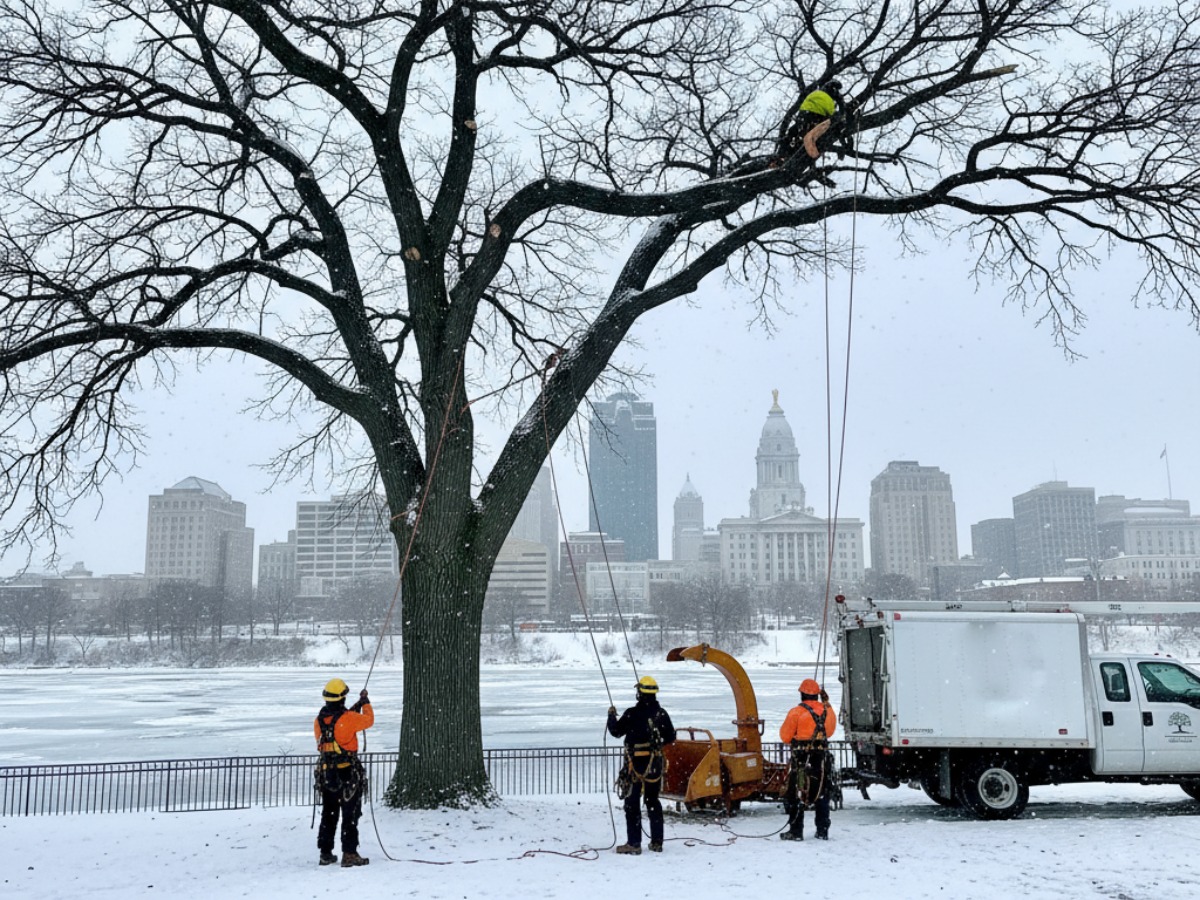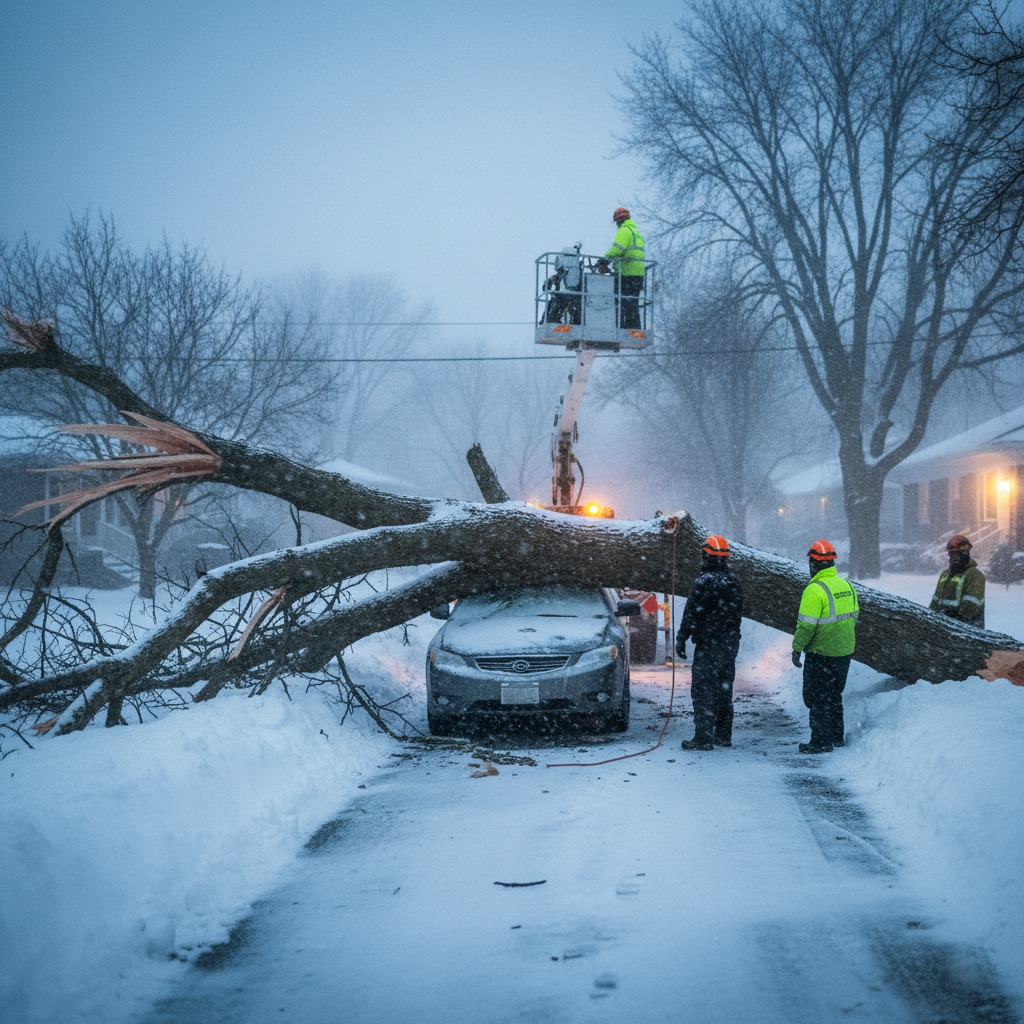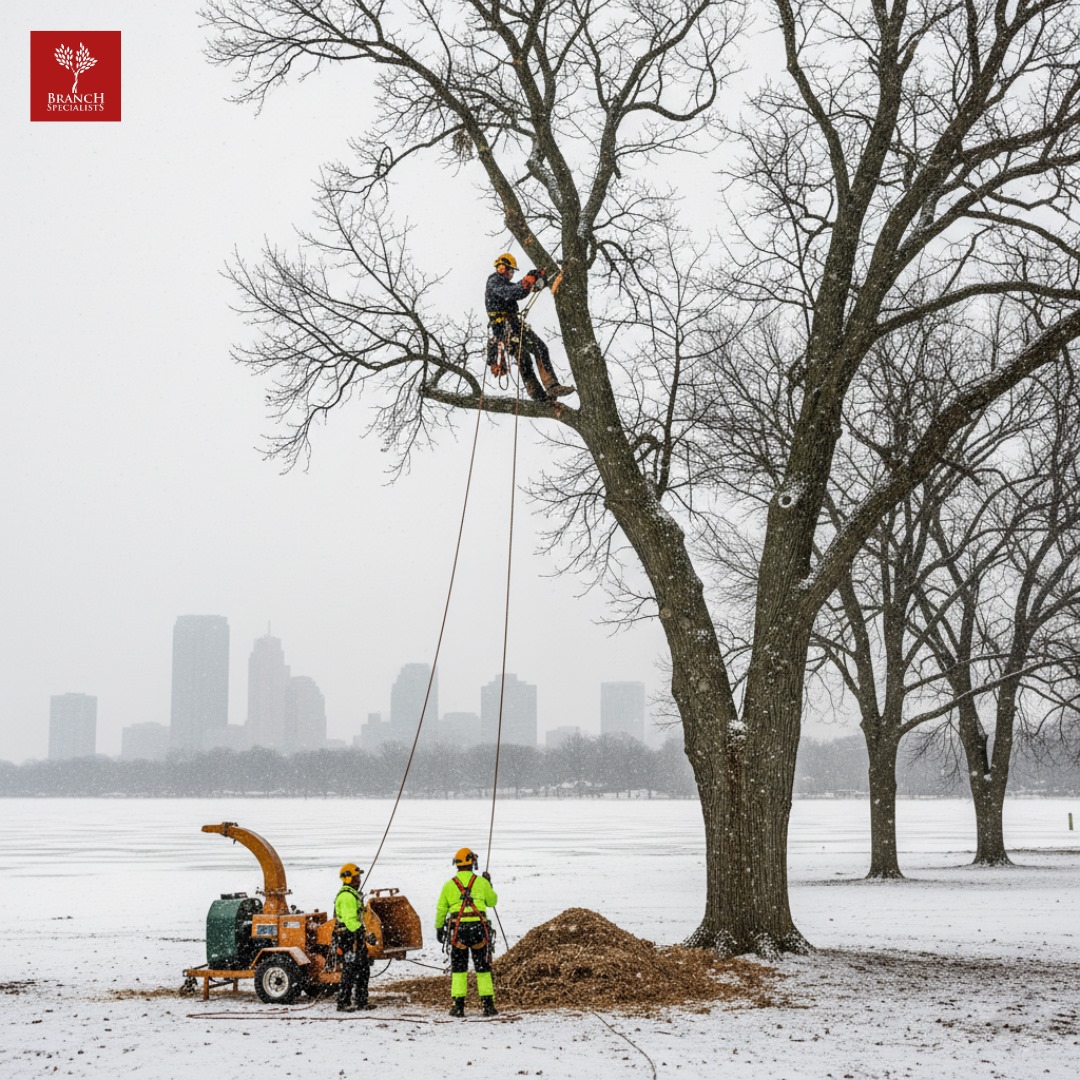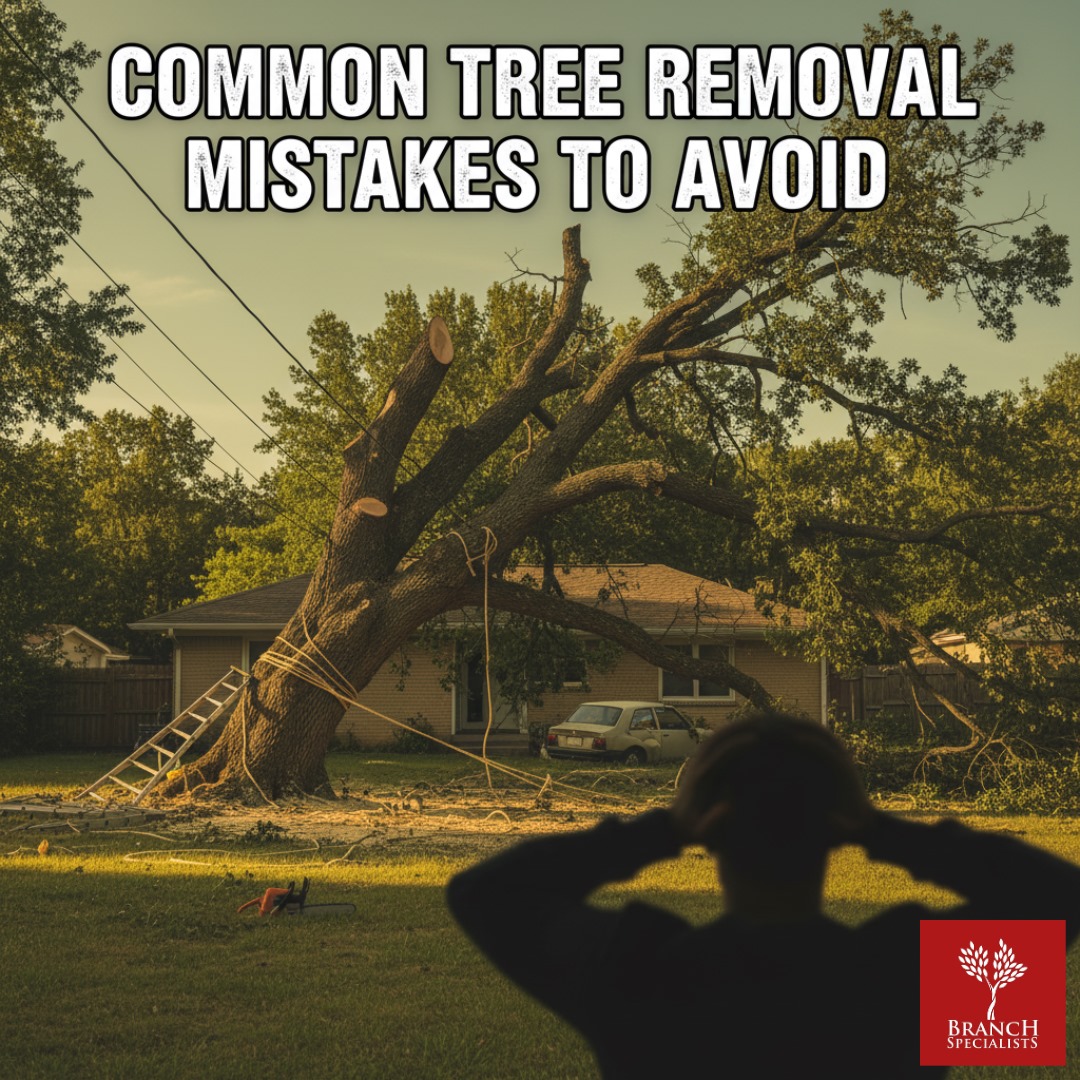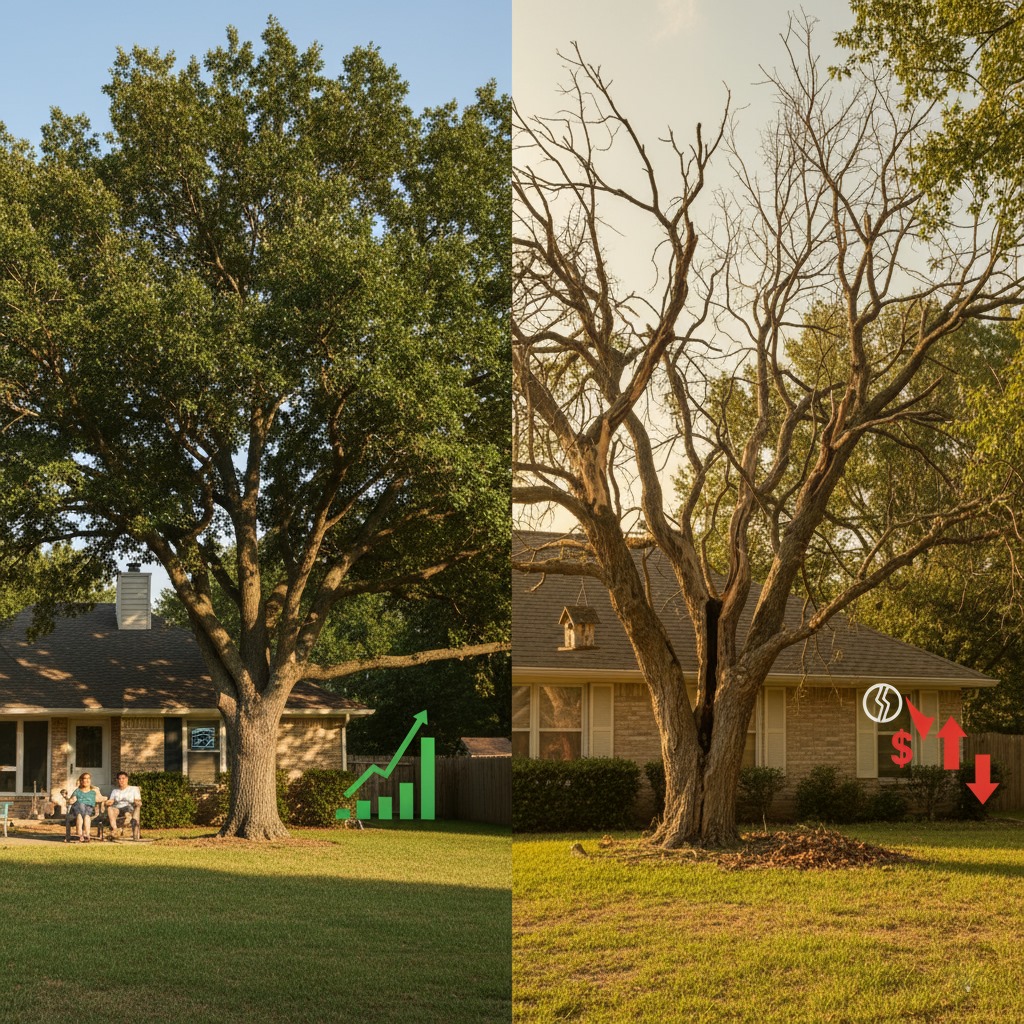The Buffalo winter comes with a bang. One week, all is well in your yard, and the following week, the heavy lake-effect snow falls upon all. Homeowners remember to prepare their driveways and roofs to face the first frost, but sometimes forget to prep their trees, leading to future storm damage.
The maples, oaks, spruces, and pines of Buffalo, though they may appear robust, have their fair share of the ice-laden boughs as the cold winds threaten even the hardest trees. Before the first snowfall, winter tree protection in Buffalo NY, is not only just for maintenance but a survival strategy to protect them.
Tree preparation helps your trees remain healthy, stable, and prepared for sudden winter storms.
This guide from Branch Specialists Buffalo provides knowledge on how to approach tree protection before winter, a practical winter tree safety checklist, and professional advice necessary to keep your mature trees standing and healthy, even in the bizarre winter storms.
Why is Winter Tree Protection Necessary for Buffalo
Many of the large maples that predominate the neighborhoods in Buffalo can grow very high and broad, with branch growth that can lodge hundreds of pounds of ice during a storm.
Red Maples, Sugar Maples, White Oaks, Hickories, Eastern White Pines, and Norway Spruce are some of the vulnerable plants for snow loads.
The vulnerability of the City of Buffalo to Lake-effect snowstorms is particularly high because of its location on Lake Erie, and therefore, it can receive dozens of inches, or even feet of snow within a few hours.
Lake-effect snow is considered to be very wet, and thus it weighs much more than powdery snow. It is the weight that predisposes branches to cracking. A sunny afternoon and a cold night may cause frost cracks, particularly on fast-growing trees such as maples.
That is why winter tree protection in Buffalo should start long before the first snow begins to fall and why tree specialists in the area pay so much attention to the structural maintenance, evaluation of the wind loads, and seasonal preparation.
How Should You Do Buffalo Winter Storm Tree Care?
Start with a Full Structural Inspection
Any tree storm prep in Buffalo must start with a thorough assessment of trunk integrity, the strength of branches, and root stability. This inspection is essential to the large trees of Buffalo, among others, particularly those maples and oaks that are old.
Watch out in places of decay, hollow areas, mushroom growths, peeling bark, old storm damage, or overextended branches.
Homeowners can set a date for review in the fall with specialists like Branch Specialists Buffalo and identify issues early enough, and suggest remedial measures. Comprehensive inspection not only ready trees for winter storms, but also assists in identifying more sustained problems like girdling of roots or loss of canopy density.
Strengthen Vulnerable Limbs and High-Risk Branches
Reinforcing the naturally weak branches of the trees that are not able to support heavy wet snow is one of the best strategies for tree storm prep Buffalo. Large canopies make wide angles or produce long unsupported limbs that curve with the weight. This is particularly true of Norway Spruce and some varieties of maple in the area.
It is at this point that tree bracing services in Buffalo are very useful. Bracing and cabling are used to stabilize the structure of a tree by redistributing the weight on it that occurs during winter. Bracing is recommended for,
- Trees with co-dominant stems.
- Weak branch unions of old trees.
- Normal looking trees but damaged by storms in the past.
- Big, old branches hang across the driveways, roofs, or walks.
Correct bracing ensures that failure does not occur in case of a winter storm, and it safeguards both human beings and property.
Seasonal Pruning for Safety and Strength
It is also essential to do tree pruning in Buffalo, NY, to keep the large trees in structural balance. The removal of dead, diseased, or dangerous branches lowers the weight load and avoids winter breakage. Defoliation also enables easier passage of wind, thus reducing the chances of failure of limbs.
The high snow areas in Buffalo should be pruned during the fall as the trees are going into their dormant stage. The right cuts should be chosen to avoid infection and enhance winter endurance.
Homeowners should dwell on eradicating crossing branches, weak unions, and areas damaged by storms. Add this to your pre-winter pruning checklist, which should be filled in prior to heavy snowfall.
Protect Root Zones with Proper Mulching
The soil in Buffalo becomes frozen with snow throughout the winter season, and this may cause an interruption in the movement of moisture and strain on the root systems. One of the most effective methods of winter tree protection, particularly of young maples, ornamental trees, and new plantations, is mulching.
An organic mulch around the drip line controls the soil temperature, lessens the exposure of roots, and acts to conserve moisture. It also shields the root system against the regular freeze-thaw sequence that occurs in Buffalo.
Mulch should, however, be applied sparingly so as not to touch the trunk, and this prevents rot and pest problems.
Soil Care to Support Winter Strength
Healthy trees have strong wind resistance. A basic component shaping a healthy tree is a nutrient-rich, aerated soil. Clay-type soils are compacted, thus limiting the growth of roots and exposing them to storms.
Pre-winter work: Improve soil condition by aerating compacted land, increasing organic matter, and supplying roots with adequate oxygen.
Nutrient deficiencies that influence winter resilience can also be established by a soil assessment. Winter experts such as Branch Specialists Buffalo, usually suggest specific modifications to reinforce root systems prior to the freeze season.
Protect Bark and Reduce Frost Cracking
Frost cracks are particularly susceptible to the large maples, fruit trees, and thin-barked ornamentals of Buffalo. The shrinkage is so rapid as to crack vertically when a warm afternoon sun warms the bark, and the temperatures drop at night. This destruction is more severe during serious storms.
Protective steps include,
- Covering young tree trunks or delicate ones.
- Cover tree trunks with eflective white tree paint.
- Take precautions to protect trees from snow blowers or plows.
The measures provide winter tree protection in Buffalo, NY, to tree barks.
Safe Snow and Ice Removal from Trees
Your branches may in danger due to the weight of the snow in Buffalo after a heavy snowfall. The key is gentle snow handling,
- Gently remove snow; never shake branches.
- Do not remove ice; this leads to the creation of more cracks.
- Avoid close contact with strongly bent limbs.
- Assess the dangling trees of breaking.
This basic form of care prevents avoidable structural stress.
Monitor Your Trees All Winter Long
You may think that winter preparation is concluded by the first storm; however, constant monitoring is the best winter tree protection in Buffalo NY that you can do. Periodic check of trees will enable you to notice early signs of failure, like,
- New splits.
- Sudden leaning of trees.
- Too much snow on the ground.
- Revealed roots through moving soil.
- New cracks in the case of cooling down.
Active monitoring averts a crisis and saves big trees during an increase in the severity of winter storms.
Complete Winter Tree Safety Checklist
Every significant winter-preparation step is discussed in this checklist.
- Conduct a full inspection.
- Remove hazardous branches.
- Schedule seasonal pruning.
- Improve soil structure and drainage.
- Install cabling or bracing if needed.
- Apply mulch properly.
- Wrap trunks where appropriate.
- Remove snow safely.
- Monitor trees through winter.
This is the best winter tree protection, leaving Buffalo homeowners with a lot of confidence even before the first snow.
When to Call Professionals
Some large-tree issues require expert tools and knowledge. Homeowners should know when to call a tree service Buffalo, especially if,
- Trees are exceptionally tall or old.
- Branches extend over structures.
- Leaning suddenly increases.
- Cracks or hollows become visible.
- Emergency tree hazards.
Timely intervention prevents accidents and preserves valuable landscape trees.
There are certain problems with big trees that need professional tools and understanding. Homeowners are expected to understand when to call a professional tree care service for winter storms, as early detection of accidents helps save on the loss of good landscape trees.
Get more insights: Tree Service in Buffalo NY: When to Call the Professionals Tree Service Near Me Buffalo.
Conclusion
Winters in Buffalo are terrible, yet you need not torture yourself. The right preparation is the most important in keeping them standing the heavy snow and strong winds.
Branch Specialists Buffalo provides their services to customers in inspections, pruning, bracing, storm preparation, and full winter tree protection Buffalo NY. Their team makes sure that all the trees are ready for winter and that they will be healthy in the future.
FAQ
Q1. What can I do to prepare trees for winter storms in Buffalo?
The preparation of trees for winter Buffalo includes pruning, bracing, mulching, and inspection of the structures that make trees endure snow.
Q2. Is Ice storm tree protection in Buffalo necessary for the large trees?
Yes, the old, tall, and broad canopy trees are particularly susceptible to ice shedding and require seasonal ice-protection methods.
Q3. What includes in winter storm professional tree care?
Professional tree care includes assessments, structural reinforcements, safe pruning, and winter monitoring, and assists in avoiding major failures during winter.


